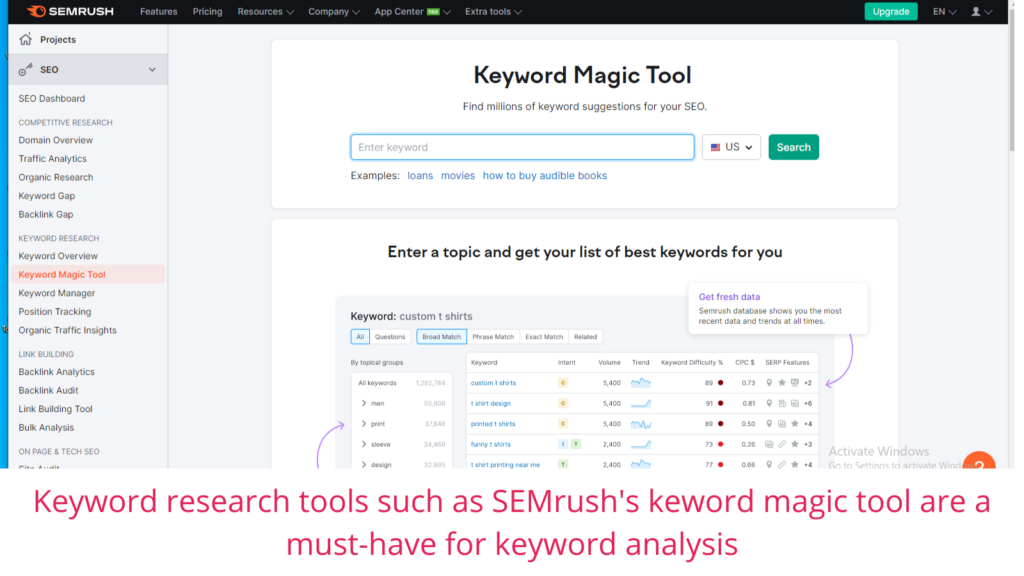What is SEO writing, and how do I do it?
What is SEO writing?
Writing SEO content is an intimidating task for many writers. From topic selection and gathering research to writing the post and pressing “Publish,” the writing process often demands hours.
That’s why if your post doesn’t earn the traffic you expected, it can be a major letdown. Fortunately, search engine optimization is a way to combat low traffic. SEO writing optimizes the content on the page so that search engines will more easily crawl its content and judge it favorably. It is given a better placement in the SERP.
SEO writing is a form of writing that helps websites become more visible to major search engines. A highly visible website with good content appears on the first few pages of results when someone searches for that topic.
Why Is SEO Writing Important?
SEO writing is done to help content rank better on Google. If the content is not optimized, it will come up several pages back in a search. For your content to rank, it also needs legit search engine optimization.
Put another way: Amazing content + on-page SEO = SEO writing.
The higher a website ranks in search engines, the more people will visit its site. More visitors means more organic traffic and, potentially, more leads. SEO content-writing jobs are increasingly in demand, so understanding what the job entails means you will be a more valuable asset to any company that hires you.

A study by Sistrix found that the number of clicks that pages get depends not only on getting onto that first page of search results but also on getting as high up on that page as possible. The first result on the first page gets clicked on by more than 28% of people doing the searching. After that first result, the percentages go down with each spot on the page. So you need your site to be one of people’s first results.
Writing for SEO is also important because it is a marketing technique that keeps going for the life of your website.

Many people do well with PPC advertising, but if they stop paying for that advertising, it will no longer bring traffic.
Defining key terms
- SERPs: Search engine results pages. In other words, the Google page contains all the results users can click on after a query.
- SERP position: The exact ranking in Google Analytics. For instance, Position 14 would refer to page 2 of Google since only ten listings typically appear on Page 1.
- Anchor text: The hyperlinked words or phrases directing traffic to other web pages.
- Search queries: Words that users type or say into search engines.
- Search volume: The number of times a term is queried per month.
- Click-through rate: Percentage of clicks for a SERP result relative to how many times searchers saw that search result.
- Conversion rate: Percentage of people who complete the desired action (a click, a purchase, etc.) divided by the total number of people who visited that page.
How to write for SEO
Keyword research
The first step before writing new content is to decide which keywords to target.
This process is known as keyword research, and it’s essential for a simple reason. You need to write content around topics people search for; keyword research will tell you that.

When you do your keyword research, the outcome will be a set of SEO keywords; both focus keywords and long-tail keywords that people type in search engines.
The easiest way to do this is to:
- Go to Google and search for your chosen topic.
- Visit the top 5 pages and analyze the type of content they provide.
- Use keyword research tools such as ahrefs, Ubersuggest, etc., to find out for which keywords those pages rank and the traffic they get. We have provided a list of the best free Research tools to use in the market.
- Then depending on the results, decide which main keywords you will target in your content.
- Using a tool, find out the associated long-tail keywords and LSI (or semantic keywords)
Write engaging content
It seems easy enough, yet so many websites make content for all the wrong reasons. Write content that appeals to the interests of your target market or answers their questions. Not all posts need to be about your product or service, but they all should be industry related. Assert yourself and your company as an expert in your industry by writing SEO-friendly content that is interesting and informative, and do it better than your competition.
You need to make sure that you understand the user intent. In other words, your content should match what users want to read for the particular keywords.
One of the ways to find out is to go back to the Google search results and look for patents. For example, if you are writing an article about ‘SEO tools,’ you will notice that almost all results are about lists with ‘Free Tools.’
This means that Google has found out that when users search for tools, although they don’t include the word ‘Free,’ they intend to browse lists of Free tools.
This also means that if you target this keyword, you must adjust your title and content accordingly. Otherwise, you minimize your chances of rankings for that term.

Create headings using long-tail keywords
One of the characteristics of SEO-friendly content is that it’s easy to read by both search engines and users, and headings help in that direction. Most users won’t read your content; they will scan through it. Having meaningful headings, you help them find the part they want faster.
Search engines follow the same pattern, especially for long-form content. They scan the page and look for certain elements to understand how a page is structured and what topics or keywords the content is covering.
To make their job easier, you can use predefined heading tags in your HTML like the H1 tag, h2 tag, and h3.
Usually, a page has only one H1 tag used for the title, and the rest of the content has H2 for the main headings and H3 for the sub-headings. To further improve the SEO friendliness of your copy, try to use some of your long-tail keywords in the headings.
Use your keywords strategically.
Here is an excellent tip that most SEO writers fail to follow. Once you are done with the first draft, you need to go back and revisit your post introduction.
Your goal is to ensure that your target keyword is included in your opening paragraph. The reason is that Google always considers that content above the fold and high on a page is more important than content found down the page.
By adding your keywords in the first paragraph, you give a big clue to Google as to which keywords to associate this page with. It’s also good for the users since you can help them understand that they are on the right page.
Use LSI or related keywords.
The latest algorithms look for common words that accompany the keywords you use.
That lets the search engine know that the content is about that topic. If you aren’t sure how to use these companion words, study latent semantic indexing and put that knowledge to use.
Optimize images
A great web page may include several different ways to impart information. These often include other types of media to back up and expand on the information in the text.

The use of videos on the page is excellent for this purpose. Using helpful pictures is also useful to readers.
Too much gray text can be monotonous for people to read. Breaking it up makes it flow better and allows for easier reading.
Adding images to your content makes it more exciting and easier to read. While this is not directly related to SEO writing, it can help in several ways:
- Users are more likely to share content with high-quality images on their social media networks than content with no visuals.
- You can use the image alt text to give more clues to search engines about your content.
- When properly optimizing your images, you have more chances of appearing in Google image search for your target (or related) keywords.
Links: use them (internal and backlinks)
Using links as information citations is a common way to show where the information came from.
However, your site should not be using information from low-quality sites. If you have links to spammy sites, the information on your page will also be assumed to be spammy.
Always link to high-level websites that are popular in their own right.
The overall goal of search engines is to make good information universally available. When you link to good sites, you show search engines that you are connected to other sites and get your information from useful sites.
Most SEO content writers forget internal linking. An internal link is a link that points to a page on the same website. When you publish a new page, it has to match your site’s topics. This improves relevancy and rankings.
Although internal links are not as powerful as SEO backlinks, Google uses them to understand what the linked page is about.
Final word
The success of your content marketing or copywriting campaign will depend on the SEO writing strategies you put in place.
Anyone can learn SEO writing. Mastering SEO writing is easy through practice and following some basic SEO principles. As with any other SEO-related project, it requires a lot of time and research, but the result (your website ranking high on search engines) is worth the work you put in.

